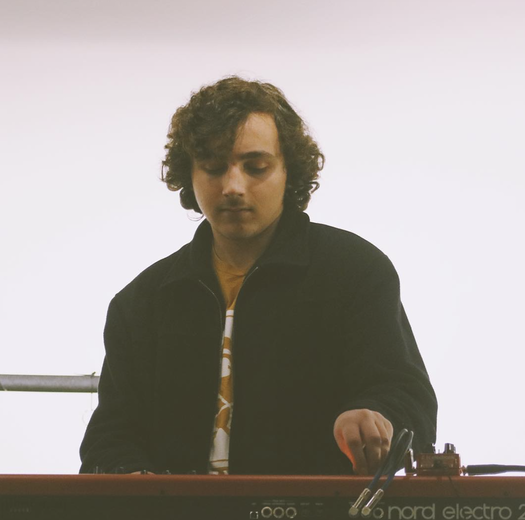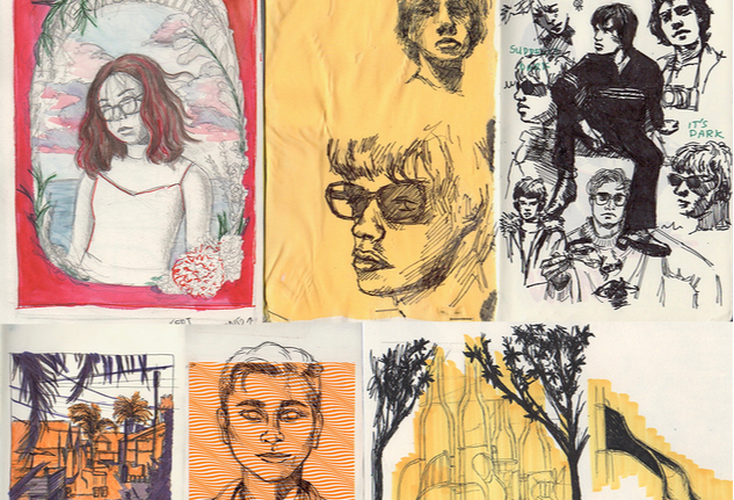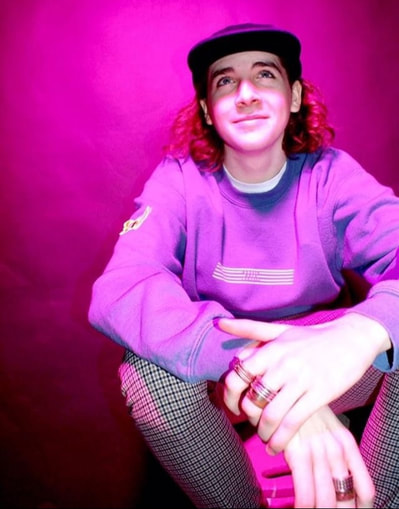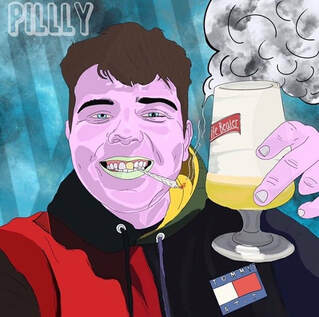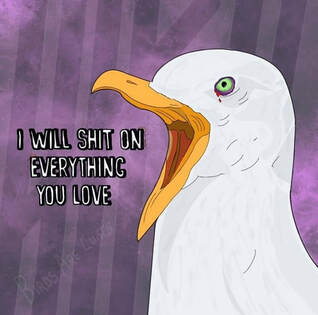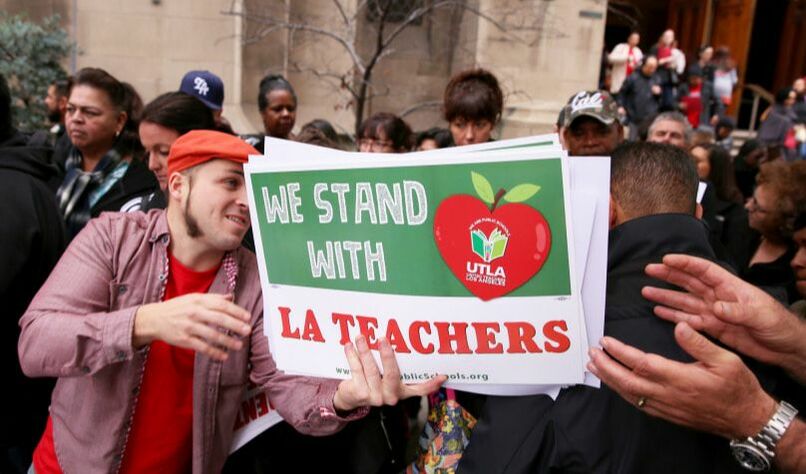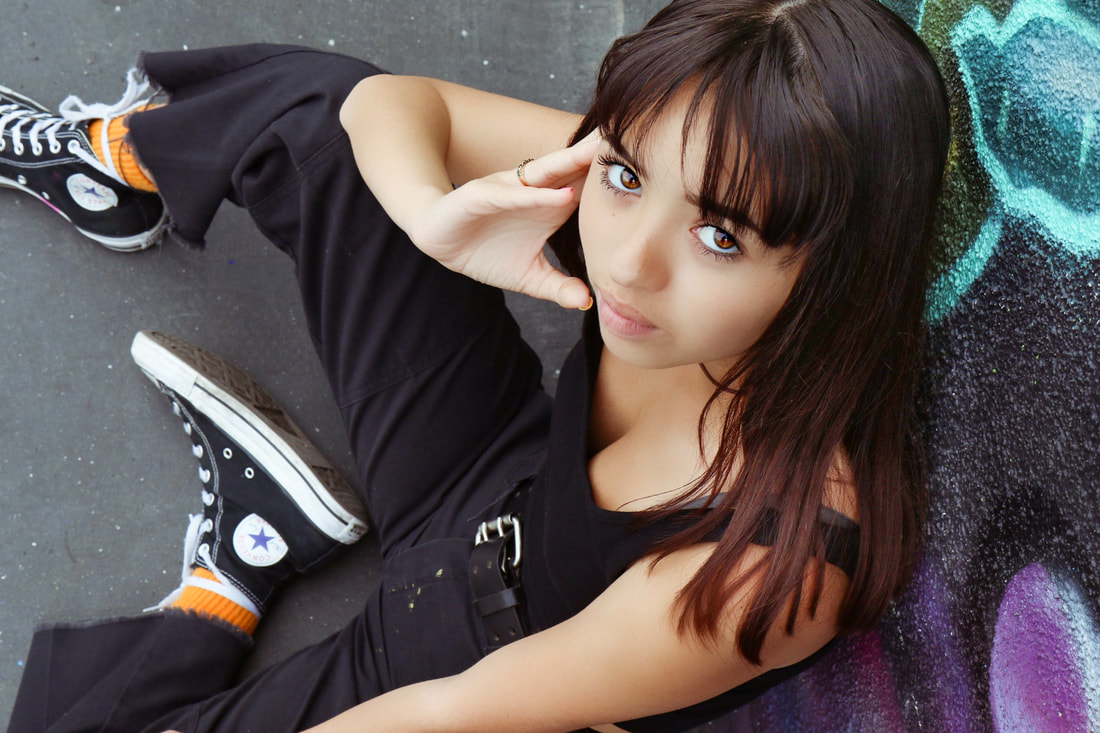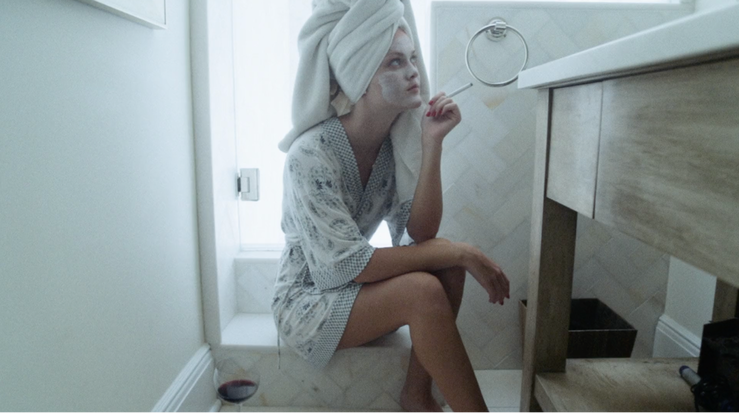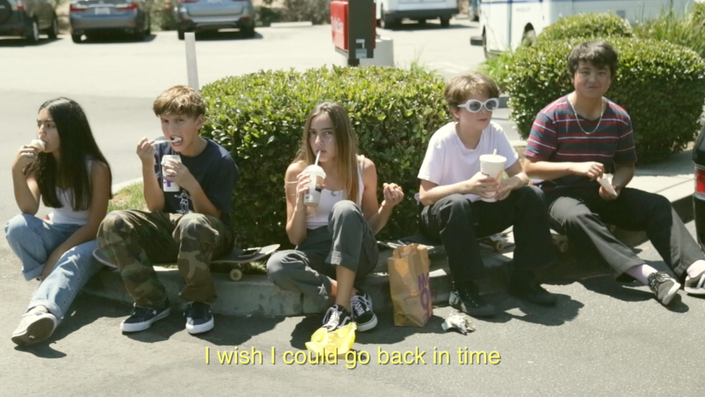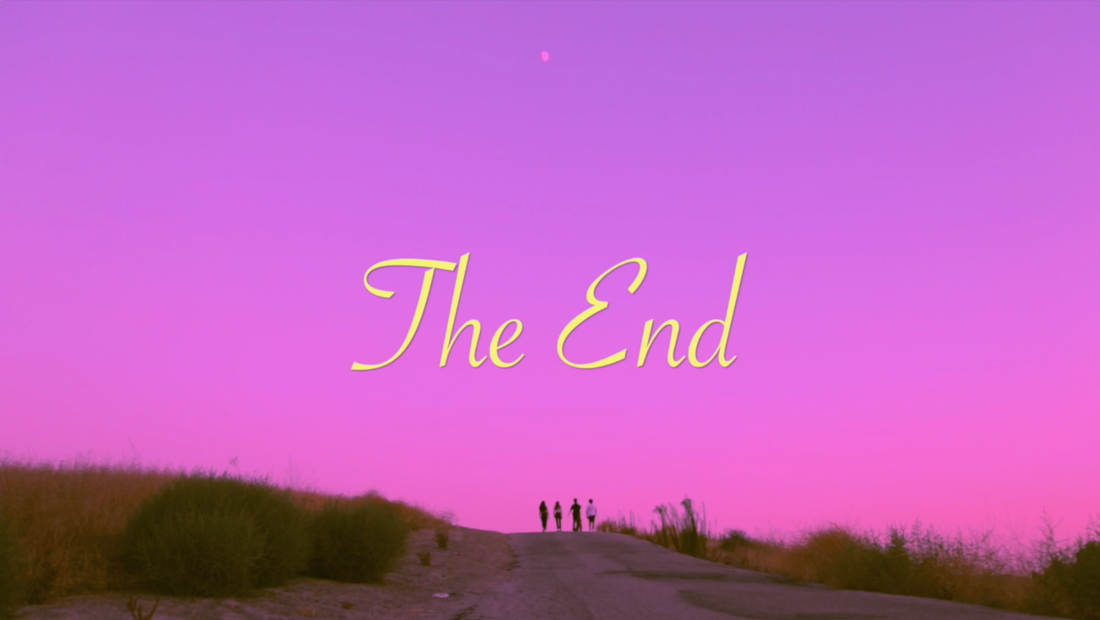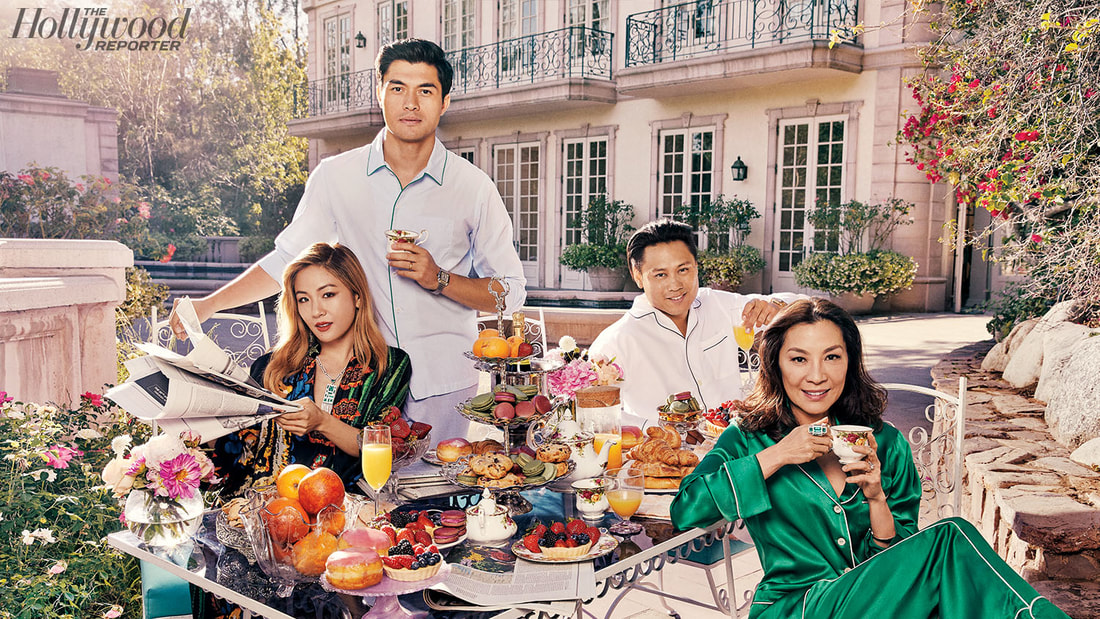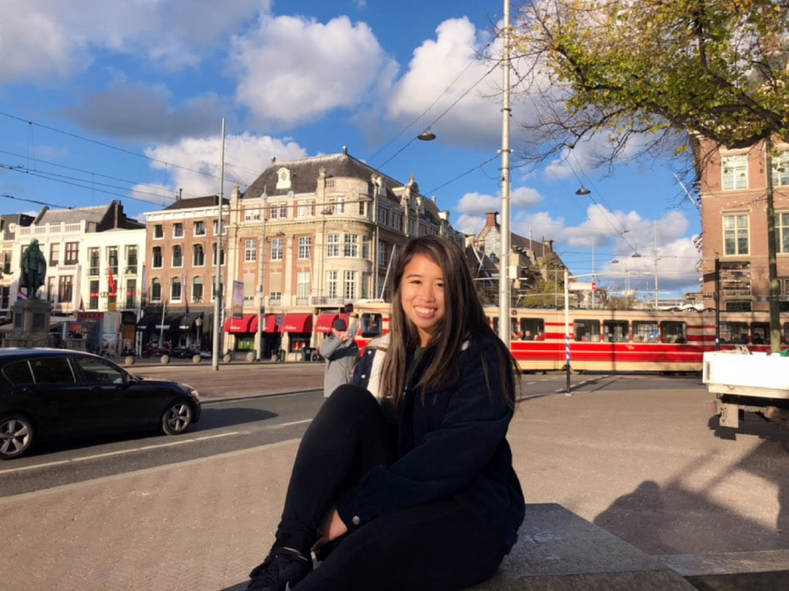|
The Heart2Art Project’s Gillian Rule interviewed Joseph Matveyenko, a 17 year old musical artist living in Portland, OR about his artistic expression through music and what the youth have to offer the artistic world amid adversity. Here’s what he had to say:
GR: What is your passion and when did it begin? How did it develop and grow throughout your life? JM: Music is my passion. Ever since I saw a pianist play at my cousin’s bar mitzvah when I was 4 years old, I knew that I wanted to play and create music. At first, I played classical piano and felt that I could release all my stress from school each time I practiced. When I started high school, I joined a pop music performance program that opened me up to countless other genres of music and styles of playing. As my horizons widened, I began to develop my own sound as a keyboardist and gravitated toward R&B/soul music. Since moving to Portland, OR, I’ve entered the local music scene and perform with several groups. Meeting unique musicians and songwriters here has further expanded my musical tastes and abilities. GR: How do you express yourself creatively? What mediums do you use? JM: I grew up being taught that piano wasn’t an artform, but rather a talent. I try to challenge that everyday and express my creative side through my playing. Whether it’s a jazzy keyboard solo on stage or writing and recording songs at home, I strive to release my innermost feelings in my music. GR: What kinds of obstacles did you face in pursuing music, either as a hobby or career? Did you have any supporters along the way? JM: Playing music as a career has many challenges in today’s content-swarmed society and modern economy. Not many, if any, resources are offered to full-time musicians and artists. Contracts with venues or bandleaders hardly ever exist and make it easy to be taken advantage of financially. There have been times where I’ve suffered from my lack of financial experience and young age. Last year, I rehearsed weekly for a few months to play 3 shows on Cinco De Mayo weekend in Seattle, Portland, and Vancouver with a Latin hip-hop artist. Payment for all the hours spent learning songs, playing the three shows, and my job as the band’s arranger was verbally agreed upon. On Cinco de Mayo, I drove up to Seattle and was ready to check into the hotel room that I was promised. But strangely, there was only one room for all 5 of us, and to make matters worse, the hip-hop artist who hired me brought 4 other females with him that would all share the bed with him. The venue and the show weren’t as described and my payment changed to being offered in the form of girls to sleep with and alcohol. It was easy for me to decide to drive four hours home and not play the show. This painful experience and many others my Portland peers and I encounter regularly have helped us grow and not put our trust and talents into the wrong hands. GR: While more spotlight is being brought to the voices of our generation in recent years, history has shown that the perspectives, activism, and art of teenagers are often dismissed. Have you personally experienced this as a teenager? JM: I’ve definitely experienced my opinion and perspective dismissed due to my age. I mostly play with musicians in their 20s, and at times, I feel uncomfortable being around the alcohol and drugs. Luckily, my music friends understand that I don’t smoke or drink, and they never try to force it onto me. However in Portland, music venues and the Oregon Liquor Commission assume that all kids my age drink, so we are barred from playing at any venue that serves alcohol past 9pm. Also, some venues decide that minors can’t ever be inside at any time. I’ve gotten better at getting around these restrictions and have negotiated agreements with venues I frequently play at, but it’s definitely very frustrating to show up to a gig and not be let inside. People watching my shows are often surprised to see someone so young performing with bands, and it’s hard to be taken seriously as an artist at this age. Comments that I get after shows often relate to my age rather than my singing/playing, not that they’re negative. I know that as I get older, I will continue to overcome this small hurdle. GR: You mentioned that you have an EP coming out this summer, can you tell us a little bit more about that? JM: I started singing seriously during the past summer and take lessons with Moorea Masa (singer for Allen Stone and Emily King). Writing songs feels so liberating to me, and I’ve been able to release all the emotions built up inside of me after leaving the city I lived in my whole life and experiencing a rough break-up. I played my first solo show in December and am playing my material with a full band for the first time next month! I’m currently in the process of recording my EP and am working with friends in Portland and LA on this special project. You can expect some more details soon! GR: Any last words or advice you would like to share? JM: This might seem corny, but I think everyone should strive to do what they love, even if there are obstacles and challenges in the way. A lot of people live to plan for the future, but tomorrow isn’t always guaranteed. Go do what you want to do now! Follow Joseph! Instagram: @hazansky.pdx Gillian Rule VP of Social Media + VP of Communications + VP of Publications @gillianrule
1 Comment
The Heart2Art Project’s Gillian Rule interviewed Remi Frolichman, a 17 year old artist attending the Orange County School of the Arts about her artistic expression and what the youth have to offer the artistic world. Here’s what she had to say: 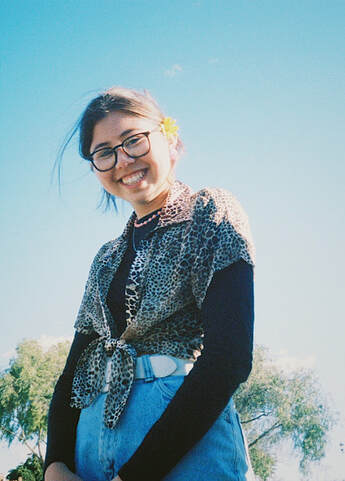 GR: What is your passion and when did it begin? How did it develop and grow throughout your life? RF: My passion for art has been around for as long as I can remember. I’m told it began with drawings on MagnaDoodles - then it evolved into oil painting, and now ranges from painting, photography, to graphic design. GR: How do you express yourself creatively? What mediums do you use? RF: Aside from, and more frequently than visual arts, I express myself through my apparel. For a while I’ve valued the expressive side of clothing - it’s something that’s new every day so I prioritize having fun with my clothing as almost an artistic medium in a commitment-free/transient way. I express myself through music, as well - I can sort of play a few instruments and I’ve written a little, in a hobby type of way. Whether it’s playing or creating playlists, music is huge in my life and I’d consider it some way I express myself. GR: Where do you draw your inspiration from? Is there a particular artist that you find inspirational? RF: Artists Ignasi Monreal and Delfin Finley make up my top inspirations in art. I’m constantly inspired by their detailed work and who they create for. Also Sari Shryack and Kehinde Wiley [inspire me]. A very large portion of my inspiration also comes from the people and work I encounter at school. 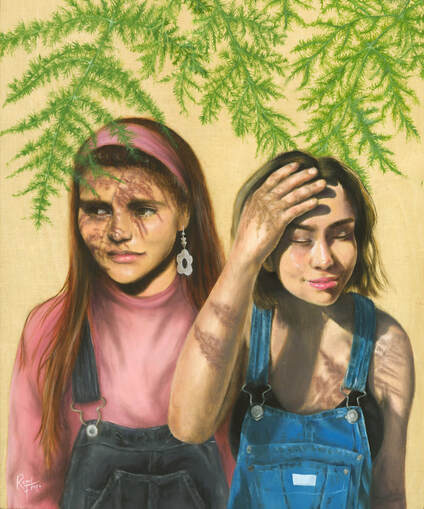 GR: Aside from visual artists, are there any artists in music, film, or other mediums that have inspired you as well? RF: I’m often inspired by the work of musical artists, the music, the writing, and the visuals. Specifically artists like Tipling Rock, Steve Lacy, and Half Alive. My favorite fashion designer/creative director is Alessandro Michele who leads all the beautiful ideas portrayed by Gucci. GR: What kinds of obstacles did you face in pursuing the arts, either as a hobby or career? Did you have any supporters along the way? RF: Though I think it’s gotten better, there’s still a stigma around pursuing art. I’ve felt some subtle influences of this stigma, however I’m very fortunate to have strong supporters of my artistic path. GR: You go to an art school. How has being in an art school enhanced your creative expression? RF: Going to an art school for so many years has really shaped myself as an artist. Since 7th grade i’ve been immersed in a school where I’m constantly surrounded by talented artists. I immediately found that this could make it easy to fall into a pool of comparison, so i feel that this environment allowed me to prioritize strengthening my own originality. On top of this, the friendly competition as a result of the concentrated talent provides a source of motivation to create and advance my work. 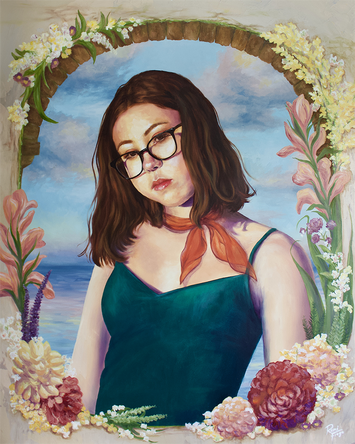 GR: While more spotlight is being brought to the voices of our generation in recent years, history has shown that the perspectives, activism, and art of teenagers are often dismissed. Have you personally experienced this as a teenager? RF: I have definitely felt the effects of dismissive comments regarding my art, but I think more so than the comments, I place the dismissal on myself. I often find myself devaluing what I do, almost regardless of what people say - that people won’t want to purchase my pieces or will take my work/practice less seriously due to my lack in experience or young age. So I think it’s the climate that surrounds the overlooking of teen voices that can affect how teens view themselves. GR: What does the youth have to offer to the world (whether this means perspective-wise, activism-wise, the sharing of art, etc.) and why is it important that this is recognized? RF: Youth today can offer open minds. Though mindsets aren’t unanimous, openness to change is something more prevalent in the newer generations. I think it’s important to recognize that the future can diverge from the past and today’s teens can understand that what we live in depends on what we spread as individuals. GR: Do you have a favorite piece that you have created? Can you explain it and why it is your favorite? RF: My favorite piece is a self portrait I completed in December 2018. It’s a manifestation of the week I spent in Italy. The composition, posture, and expression were inspired by Renaissance portraits I saw in Florence; the curved border from the repeated architectural style; the flowers and greenery from the agriculture. This trip gave me a significant new perspective on the world, outside of the bubble of my own region. Consequently, I thought it best to create a piece representing what I saw, but also how I felt during/after the trip. I consider this piece my favorite because I felt more conceptually driven during the process than in that of any others, so I have a much stronger connection to it. 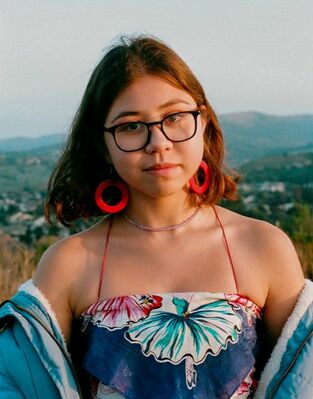 GR: How would you explain being a teen artist in comparison to being from an older generation? RF: Exposure is different! It’s obvious that with the advancement of all types of social media networks it’s extremely easy to get your work out there. But this has its ups and downs. Like, your work, it’s out there, but in an ocean of everyone else’s as well. I also think there’s more freedom in what’s considered art today, which allows more people to create what they want and get recognized for it. GR: Do you feel like your art is representative of your experiences as a teenager? As you get older, do you think that your artistic style will change? RF: Throughout my teen years my work has included depictions of my friends and photos I’ve taken. I don’t think my pieces directly tell the audience the stories of my experiences, but more so give a snapshot of something I find significant. When I look at my work I can see the arc of my skill and the transition of my interests and inspirations. I think my style will keep a lot of the same aspects but I’ll continue to develop it as I explore many more subject matters, techniques, and mediums. GR: Any last words or advice you would like to share? RF: Explore, let your confidence radiate, ‘make an enemy of envy’ (Jerry Saltz), find those who inspire you and keep them around. Follow Remi! Instagram: @remifrogo Gillian Rule VP of Social Media + VP of Communications + VP of Publications @gillianrule 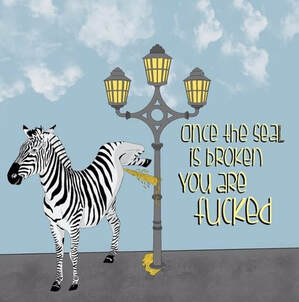 The Heart2Art Project's Gillian Rule interviewed Tom Moore, an 18 year old graphic illustrator living in Norwich, England, about his artistic journey. Here's what he had to say: GR: What is your passion and when did it begin? How did it develop and grow throughout your life? TM: My passion for art started when I was really young, I always loved to copy the artwork from cartoon magazines like beano’s and Dennice the menace, those kind of snazzy magazines. But I still tend to use elements of that style in my work today so big up Dennice. GR: How do you express yourself creatively? What mediums do you use? TM: I used to use a wide range of mediums with my work but I now find myself using solely digital processes. Mainly because my style uses a lot of bold solid colours and black outlines which are just much easier to create using digital softwares. Really it’s because I’m lazy and can draw digital work much faster and be more experimental because of the undo button. GR: Where do you draw your inspiration from? Is there a particular artist that you find inspirational? TM: The main artist that I take inspiration from would be an illustrator named Jimbo Phillips. I’ve always loved his bold pop art style and his random subject matters, I think you can clearly see elements of his style in my work. GR: What kinds of obstacles have you faced in pursuing the arts, either as a hobby or career? TM: I haven’t ever really had any major obstacles to overcome in regards to art. I suppose making people give a shit and look at my work is hard but more people seem to be doing it so I must be doing something right. GR: While more spotlight is being brought to the voices of our generation in recent years, history has shown that the perspectives, activism, and art of teenagers are often dismissed. Have you personally experienced this as a teenager? TM: That’s a deep question, Erm well to be honest older people look at my work and just ask if I was high when I did it, so yeah, old people don’t care about young people’s art, they care about bills, politics and complaining about how our generation is ruining the world because we’re nice to people. GR: What does the youth have to offer to the world (whether this means perspective-wise, activism-wise, the sharing of art, etc.) and why is it important that this is recognized? TM: The youth offers lots of things to the world. Firstly I think that younger people today are more accepting of people as individuals in regards to their race, sexuality or gender, I think that we just don’t care as long as the individual is happy with it. I just think we are more open to things than older generations have been. This is important because we’re currently in a time where there is so much division in the world when we should just all be mates. GR: Why do you make art? TM: Because it relaxes me. GR: Do you have a favorite piece that you have created? Can you explain it and why it is your favorite? TM: My favourite shared piece is the one with the zebra urinating on the lamp post because it’s just a bit weird and I find it funny because I’m extremely immature. GR: Describe your art making process in three words. TM: Think, draw, done. GR: Do you feel like your art is representative of your experiences as a teenager? As you get older, do you think that your artistic style will change? TM: I try to keep my work separate from my deep thoughts as much as I can, I use it as a way to get away from my personal experiences. My drawing style always goes through phases and it will continue to as I get older, I can’t yet predict how it’ll change but I guess I’ll see. GR: Any last words or advice you would like to share? TM: Erm, Don’t be a dick, is always good advice. Also thank you heart2art and feel free to follow @gooey_shit and tell me your thoughts. Follow Tom! Instagram: @gooey_shit Gillian Rule VP of Social Media + VP of Communications + VP of Publications @gillianrule Teachers don’t get paid enough. This simple statement is something that most people regardless of party will agree with. After all, why shouldn’t those teaching the young and impressionable minds who will lead our country be some of the most highly paid among us? However, in the 21st century, this is still not the case for most if not all teachers. Recently in Los Angeles, teachers have gone on strike and have shut down roughly 900 hundred schools due to the walkout. Although this walkout will be reported on, it will most likely pass in a few days as people move on to larger issues. Unfortunately, teachers giving up their time, energy, and money to create better learning environments will not forget so easily. So, we must ask, is there another way? The answer is yes, and this answer can be found in different parts of the world such as South Korea. In South Korea, public schooling is mandatory for every student; however, public schools are not very good. In order to remain competitive for colleges and careers, most South Korean students go to “tutors” or night school teachers. These teachers operate on the basis of popularity. Tutors that have the most effective teaching style will have more students signed up to be in their class, and for each student, they are paid a certain amount. This popularity system helps students too because teachers are constantly switching up their styles to benefit the students. Not only that, but this system hugely benefits the tutors. Currently, the highest paid tutor in South Korea makes $4 million dollars a year. This is the equivalent of a professional sports player in the United States. The $30 billion industry of private industry academics in South Korea has led to a huge spike in literacy rates and test scores over the last 60 years. In fact, South Korean students far outstrip American students on every level in the PISA academic test. Clearly, our current system of education is outdated. As almost every other aspect of modern technology has advanced, schooling has stayed essentially the same since the 19th century. This static nature has hurt students and public school teachers alike. Although the states have continued to spend more money per student the educational system has not improved as drastically as the amount of money spent has. The United States has the 5th highest per-student spending rate on education, but we do not place in the top ten internationally when it comes to reading, science, or math. One reason that the numbers are not improving is due to the presence of a huge emphasis on per-student funds but almost no emphasis on increasing the salary of teachers. Teachers make a huge impact on how well a student learns. This concept is clearly demonstrated in cases like that of James A. Garfield High School. This school had no AP Calculus program and very low performing students before a teacher named Mr. Escalante took his place at the school. However, Mr. Escalante created an AP Calculus program that changed the school’s reputation. Of all Mexican-American students who passed the AP Calculus exam, 26% of them had passed through his class. One teacher has the potential to impact an entire population, inspire kids, and create a bold new generation. Allowing teachers to thrive in a free market atmosphere where they are able to earn more for outstanding work is the United States’ next step toward fairly paying teachers and giving students from every walk of life the educational opportunities they deserve. We can all agree teachers should be paid more. It’s time to have the conversation about how we get there. Editor's note: Today marks the second day of the highly anticipated LAUSD strike, in which thousands of educators gathered to strike for more funding towards schools. Yesterday, on the first day of the strike, Los Angeles schools lost approximately $15 million. Today, amidst the striking, protesters and Los Angeles County supervisors devised a preliminary plan to provide about $10 million towards school programs. Emma SextonHeart2Art Contributor 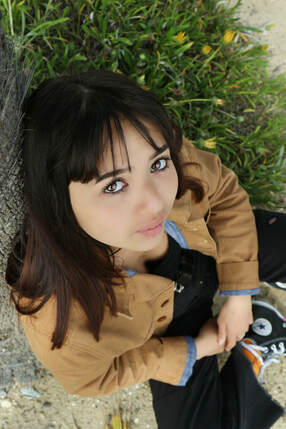 The Heart2Art Project's Gillian Rule interviewed Chloe Hammarstrom, a 15 year old high schooler living in Huntington Beach, about her experience as a young artist. Here's what she had to say: Gillian Rule: What is your passion and when did it begin? How did it develop and grow throughout your life? Chloe Hammarstrom: My passion is putting my thoughts into something that I can see with my eyes. It is different every day and it grows with my realizations and my experiences in life. GR: How do you express yourself creatively? What mediums do you use? CH: I take my visions and use acrylic or oils on any form of surface. GR: Where do you draw your inspiration from? Is there a particular artist that you find inspirational? Aside from visual artists, are there any artists in music, film, or other mediums that have inspired you as well? CH: Every single person that I have ever seen, listened to, heard of, talked to, or know of has affected my art but the number one person/artist is my mother. GR: While more spotlight is being brought to the voices of our generation in recent years, history has shown that the perspectives, activism, and art of teenagers are often dismissed. Have you personally experienced this as a teenager? CH: I have yet to meet one person who’s age is older than mine who genuinely accepts what I do. I actually am determined that no one can be fully satisfied with what I do because of how young I am. I would like to say that that doesn’t affect me because I do it for myself, but that would be a lie. GR: Do you have a favorite piece that you have created? Can you explain it and why it is your favorite? CH: I have never explained anything I create because I cannot understand it myself. GR: Describe your art making process in three words. CH: Idea, [anxiety] before, [anxiety] after. GR: Do you feel like your art is representative of your experiences as a teenager? As you get older, do you think that your artistic style will change? CH: It perfectly represents my teenage experiences. It shows my whole mind with the emotions that surround it. my style has changed and grown so much and it will never stop. my life will constantly change and that is all I paint about. GR: Any last words or advice you would like to share? CH: Live your own life. Follow Chloe! Instagram: @hoboclo Gillian RuleVP of Social Media + VP of Communications + VP of Publications The Heart2Art team kicked off our upcoming series of interviews with various teen artists with Olivia Ooms, a 16-year-old singer and songwriter from Southern California. We visited the aspiring country artist to talk about her work, her passions, and where she hopes to be in the future.
Interviewee: Olivia Ooms Director/Editor: Caitlyn Phu Cinematographer: Grace Larey Teaser Trailer for Gracie Bellissimo's 2017 documentary short film "Indie Kids" 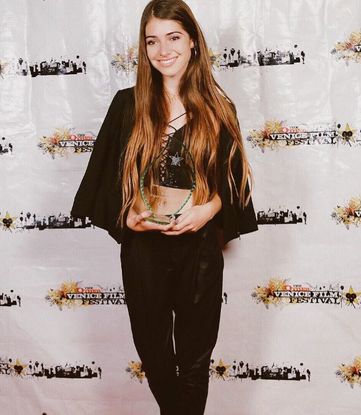 I recently had the opportunity to interview 19 year-old Gracie Bellissimo, an aspiring filmmaker, on her experience as a teen in the arts. Raised in Los Angeles, Gracie is currently working towards furthering her film portfolio and experience as she enters college studying film. Touching on subjects from her love for Lorde to her incredible internship opportunities, Gracie shared with me her journey thus far: Caitlyn Phu: What is your passion and when did it begin? How did it develop and grow throughout your life? Gracie Bellissimo: When I was just four years old, I watched a “Barbie Goes Hollywood” movie and that’s when I realized that making movies was actually a job that someone could have. It seemed so fun to me that I didn’t even think it was something you could get paid for... I still sometimes can’t believe it. From there, I thought I wanted to be an actress, but I grew up writing and directing my own plays that my little sisters would star in. I would act in them as well on top of basically putting on all the little productions. I eventually got a hold of my dad’s handheld camcorder and started making mini movies on it using barbies or littlest pet shops. When I was 6 or 7, I somehow taught myself how to edit these mini-movies on iMovie. I honestly don’t know how I just figured it out without any instruction but it felt very natural to me and it was pretty much one of my favorite ways to spend my free time. Once I reached middle school, I had done over 40 musicals in my community theater...so I still thought I wanted to do acting. One day in eighth grade, I decided to shoot and edit a youtube video of how to make a Tumblr-inspired notebook collage. I was literally just bored one day and put it up for fun, but the video racked up a ton of views, so I posted a few more. I didn’t really see myself as a Youtuber though so I stopped for a while, but then Colleen Ballinger (AKA Miranda Sings) gave my channel a 2-second shoutout in one of her videos, without even linking my channel, and a ton of people still went and watched it/subscribed. Before I knew it, I had nearly 30K subscribers and demand for content was high, so I made youtube videos for a while until it finally wore on me and I realized it was not fulfilling my true passion: Cinema. I stopped posting youtube videos and by that time, I was at the end of my sophomore year of high school. For junior and senior year, I joined an incredibly immersive film program, where I made some of the greatest friends I’ve ever had. It didn’t teach me as much as I hoped it would about film, however, so I started making a ton of short films on my own time outside of class so that I could have a portfolio when applying to colleges. A handful of my short films were accepted into international film festivals, and I also had made my own connections through social media and got to remote intern for Lucy Tcherniak (Director of The End of the Fucking World) and also shadowed at Paramount Studios my summer entering senior year, which led me to shadowing and assisting Elizabeth Allen Rosenbaum with her upcoming show (the Pretty Little Liars spin-off), The Perfectionists. I did my first semester of college in Brooklyn, New York, but I quickly discovered that the east coast isn’t for me. Now I am studying Cinema at San Francisco State University and am very excited to continue creating my own short films and music videos. 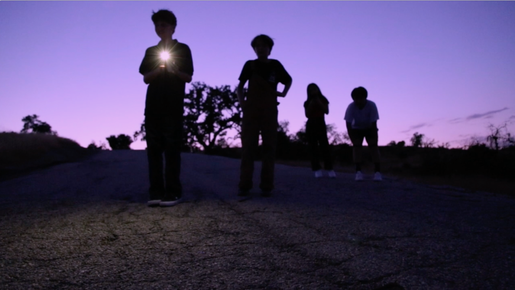 CP: How do you express yourself creatively? What mediums do you use? GB: I love creating my own short films, but I also have a lowkey passion for music. Whenever I am stressed, I either listen to music or write my own songs. I feel that writing music is my fastest, most honest and fulfilling way of getting things off my chest. I have horrible stage fright, however, even after growing up in the theater, because I hate singing in front of others, so it’s more of a personal release through art. I have considered recording an EP, so maybe that can be expected in the future. Back to film, I use film to express experiences I have either observed, experienced myself, or randomly thought of in a daydream. They usually focus on a specific theme or message. This past year, I have also been dabbling in 35 & 50mm photography. I carry either a disposable camera, my point-and-shoot, or my Canon AE1 wherever I go. I do this simply as a hobby and because of my love for the visual arts. Film photography has been a dying art form, but I love it because it’s honest in the sense that it is untouched and captures a moment raw, something we don’t see very much in an often facetuned/Instagram world. I also love the excitement of waiting to get your photos developed because every time...your roll is a mystery and there are always exciting or even disappointing surprises (I've shot a few blank rolls hahaha...still learning!) CP: Where do you draw your inspiration from? Is there a particular artist that you find inspirational? GB: I have always looked up to Lorde as my inspiration, mainly for film, but also for music. I just think it’s so inspiring that she was able to accomplish so much at such an early age. She has driven and inspired me to create honest art with hints of teenage nostalgia, and also inspired me to not let my age affect the opportunities I have worked hard to obtain (Paramount, internships with directors, etc). I even made my senior project a seven-minute video that abstractly tells the story of my high school life soundtracked by Lorde’s songs because they perfectly encapture how I felt in every stage of high school. She really changed my life and opened a whole new world to me as an artist. I can still remember the first time I heard “Royals” before any other songs of hers came out. I was only in middle school, and I knew that this girl, although only a few years older than me, was going to shape the way music today is made (I could write a book on why Pure Heroine inspired like 80% of the music we hear today haha). But basically, Lorde showed me that age shouldn’t ever stop you from pursuing your dreams as an artist and that doing something totally “out there” may actually become revolutionary. Another fan of Lorde’s was David Bowie, who even called her “The future of music”. I look to him as a prime example of variety. He was an ever-changing artist, always experimenting with different genres, which is something I long to do in film. 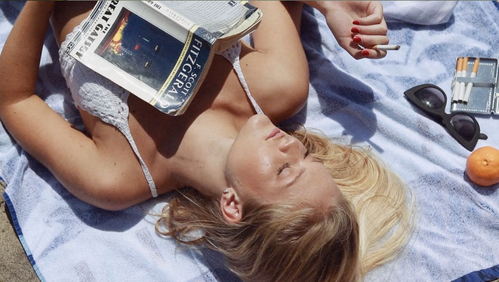 CP: What kinds of obstacles did you face in pursuing the arts, either as a hobby or career? Did you have any supporters along the way? GB: I think a lot of people underestimate my visions I have for future projects because A). I am still a teenager and B). I am a girl. I’ve been writing a very complex pilot inspired by real events and I intend to bring it around to multiple producers/production agencies, but I am super nervous they won’t listen to me because of my age or that they may take advantage of my work because they may see me as a naive, young girl. Through it all, my parents have been my #1 supporters from day one. Growing up, they provided so much love and encouragement when it came to my sister’s and my own passions. They let me use their cameras (until they eventually let me buy my own), and my dad always jokes that I was the only 12-year-old in the world to ask for a boom mic for Christmas! Music-wise, I have literally been to countless concerts because of them. They see concerts as “inspiring” rather than indulgence. CP: While more spotlight is being brought to the voices of our generation in recent years, history has shown that the perspectives, activism, and art of teenagers are often dismissed. Have you personally experienced this as a teenager? GB: Absolutely. I think the film industry is an especially difficult art industry because there is so much business involved in it, and businessmen usually tend to dismiss young girls with seemingly vague dreams of being a director. However, I have also found some people to be very supportive of me and my vision, such as Lucy Tcherniak, Elizabeth Allen Rosenbaum, Clay Pecorin, and exec. producer Peter Lenkov. They all let me shadow one or more aspects of their work and some have allowed me to assist/basically intern for them. Because they gave me these opportunities at such a young age, they only opened more doors for me and have allowed me to make meaningful connections before I even graduated high school. I am so grateful that even though I am young, they saw a bit of their own younger selves and me and gave me a shot, which apparently doesn’t happen often in Hollywood. If I ever make it, I definitely will do the same for teenagers. 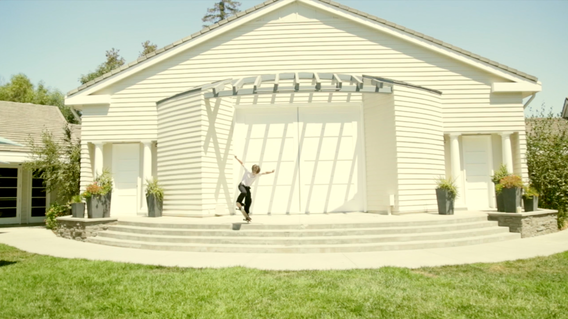 CP: What does the youth have to offer to the world (whether this means perspective-wise, activism-wise, the sharing of art, etc.) and why is it important that this is recognized? GB: We are the youth! We are young! We have fresh ideas! We aren’t afraid to say what we believe because we all start seeing ourselves as independent people around this time, and being able to speak your mind and share your thoughts with the world is so exciting and often inspiring for others. It’s important for us to speak up because the future of the world will ultimately be up to our generation, so it’s up to us to change things for the better or let things gradually get worse. CP: Why do you make art? GB:From a very early age, I have loved telling stories. Using film as a medium to tell interesting stories or spread important ideas to me holds more depth and contains more layers than photography for instance because so many people come together and use their talents to create one, beautiful piece of art together that ultimately can entertain, bring happiness to, or provoke the thoughts of audiences. CP: Do you have a favorite piece that you have created? Can you explain it and why it is your favorite? GB: I think that one of my favorite short films I have made is Indie Kids. It’s a completely improvised mini-documentary, and I love it because it was such a wholesome experience. One day, I wanted to test out some new color grading techniques, so I asked my youngest sister, Marlie, if I could follow her and her adorable/artsy friends around for the day. Tying this back to the aspect of the voices of the youth, I loved making this because I found their worldviews all to be very independent, interesting, and adorable. Also, they skate and listen to good music and dress well! In seventh grade I was a theater nerd in a Christian school, listening to just the top 40 until my eventual discovery of Lorde and Lana Del Rey turned me a bit more normal (hahahaha I’m so glad I was normal in middle school though because now a lot of other seventh graders care wayyyy too much about who they are/how they look because of social media). CP: Do you feel like your art is representative of your experiences as a teenager? As you get older, do you think that your artistic style will change? GB: My favorite genre of film are coming of age movies. I love the honesty and electricity of teenagers, how we all have this crazy blend of carelessness and caring a little too much. That’s what I love so much about Lorde...she perfectly captures the teenage experience in Pure Heroine, as well as the whirlwind of transitioning into adulthood on Melodrama. I think that is something I strive to accomplish, capturing teenagers accurately and creatively on camera in an emotionally moving, original story. Movies like The Perks of Being a Wallflower, Ladybird, Kings of Summer, and Moonrise Kingdom are some of my absolute favorites of all time, paying homage to youth without many over the overdone cliches. CP: How do you plan on pursuing your passion in the future, whether this be college or career-wise? GB: Throughout college, I am excited to collaborate with people my age on projects while delving deeper into learning about the art of cinema at SFSU. This summer, I hope to work on some sort of studio lot or film set. Looking forward, I understand that I am going to have to work incredibly hard to one day earn a higher ranking in the film industry, and I know that everyone either starts in the mail room or as a PA, so I am more than excited to take on those smaller jobs in hopes of eventually proving myself and working my way up. CP: Any last words or advice you would like to share? GB: In today’s day and age, we have so many platforms available to be able to make crucial business connections for future projects, and more importantly, a variety of places to share our work with the world and get it in front of as many people as we can. This is an exciting time for filmmakers especially, with video cameras being built into even our cell phones while current directors had to grow up using costly and complicated Super 8 film cameras. Still, I would love to own a super 8 camera! I miss seeing actual FILM on the big screen, I personally love the visual aesthetic/honesty of it more than digital work. See more of Gracie's work! Instagram: @graciebellissimo Website: graciebellissimo.com Caitlyn PhuPresident + Editor-in-Chief Note: This article was originally published on 4outof5.reviews 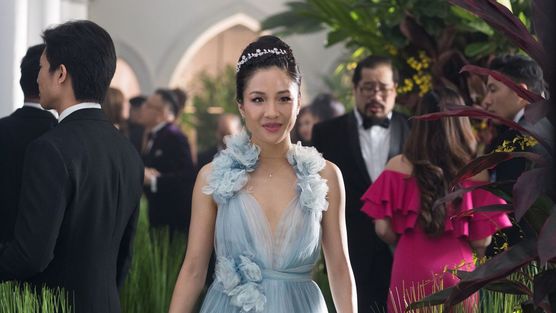 In early August of this year, the highly anticipated film Crazy Rich Asians was forecasted to gross somewhere from 18 million to 20 million in its opening five-day weekend. However, the film seemed to break both box-office and social expectations with a ground-breaking $35.2 million gross its opening weekend and $174 million in total since then, securing the film’s role as the highest-grossing romantic comedy of the past ten years. It has now been approximately four months since the premiere of Crazy Rich Asians. The constant flow of news articles and mainstream hype regarding the film’s release has naturally died down and been replaced by entertainment’s regularly scheduled coverage of Marvel’s latest superhero flick or scandalous celebrity gossip. However, as 2018 draws to a close, reflecting upon how the past year has impacted the entertainment industry can be telling of what audiences and society as a whole should expect from the next year; undoubtedly, Crazy Rich Asians is one of the most transformative films of the year in regards to the representation of minorities in the film and television industry. What truly set this film apart from the hundreds of other major films released in 2018 was its concept, rather than groundbreaking cinematography or never-before-seen filmmaking techniques. 38% of the film’s opening weekend audience was of Asian-descent, unheard of when compared to the average 6% that make up theater audiences and nearly matching the 41% of Caucasians of the opening weekend viewings. Whether Asian audiences were drawn to theaters to support the film or out of simple interest for entertainment, incredible theatrical turn-outs such as these rarely occur without signs of immense cultural impact. Crazy Rich Asians is the first Hollywood film to star a primarily Asian cast in a modern setting since 1993, the year The Joy Luck Club hit theaters-- a film that explores the respective relationships between four Chinese-American women and their immigrant mothers. A similar plot is also illuminated in Crazy Rich Asians, as the film’s main character, Rachel Chu, finds that she must battle for love and self-acceptance after being introduced to her long-time boyfriend Nick Young’s overprotective and realist mother. The mother, a head figure of one of the wealthiest families in Singapore, confronts Rachel with deeply rooted prejudices against her American lifestyle and non-traditional upbringing, prompting our protagonist to prove to both herself and the Young family that her background and lifestyle will never make her less of a person. As a real life reflection of the film’s storyline, Crazy Rich Asians has proven to Hollywood that films with a diverse cast or unconventional leads can be just as wildly successful as traditional blockbusters. 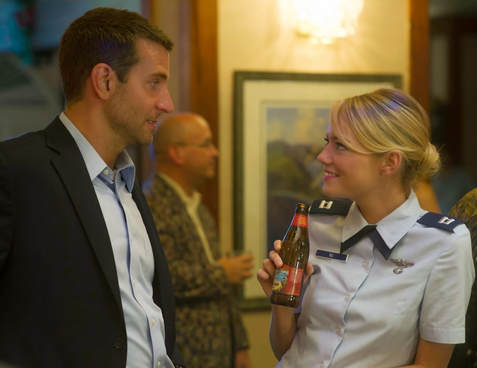 There is no doubt that Crazy Rich Asians is the archetypal and cheesy romantic comedy that Hollywood loves; while this turned many critics away from the film, I would argue that this is what makes it so groundbreaking. There is a noticeable lack of Asian roles being written and Asian leads being casted, and even some roles meant for Asian actors have been played by white people. In 2015, Aloha, a film also based on a novel, was released theatrically; naturally, many audiences were extremely critical of the casting choice of Emma Stone to play a half-Asian and half-white character. It was a prime example of a Hollywood film that could have easily casted an Asian actress, both for realism and representation rarely seen on-screen, but they turned away and instead chose a well-known Caucasian actress for the role. Additionally, while a minuscule number of large production films will cast Asian leads, when an Asian actually is cast, it is far too common that a role requires an Asian actor to fit a certain stereotype. Popular representation of Indians in film are as tech-wizes or Google interns, while you can find Chinese actors playing martial arts experts in numerous of movies. The fact that Crazy Rich Asians acts as a classic romantic comedy, touching but predictable throughout, is a big step in Asian representation in film, as it proves that Asian males and females can star in romantic comedies, or any variety of films for that matter, and still see success. 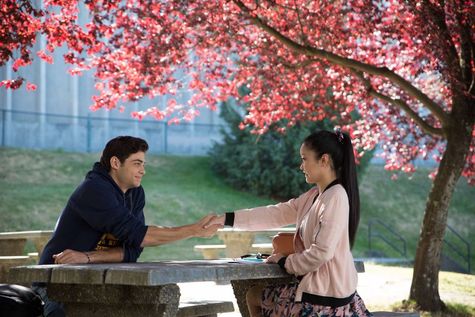 The number of Asians playing typical lead roles in major film and television series seems to be growing noticeably in recent years and is beginning to give hope to Asian communities throughout the nation. In the 2016 film The Edge of Seventeen, the main character Nadine, played by Hailee Steinfeld, finds herself falling for her unbearably awkward but endearing friend Erwin, your average teenage boy, played by Asian actor Hayden Szeto. In 2018, Twitter lost its collective mind over Netflix’s To All The Boys I’ve Loved Before, based on a novel by Jenny Han, which centers around a half-Korean teenage girl named Lara Jean, played by Lana Condor, and her journey to find love amidst the chaos of growing up. Similar to Crazy Rich Asians, this film is a prime example of the romantic comedies that Hollywood pumps out regularly; what makes it so unique, however, is the choice to cast an Asian as a lead role in a film that has little to do with the fact that she is Asian. Another example of a recent film that has cast an Asian in a role that could have taken a more traditional route was the 2018 film Searching, a thriller that follows a father, played by John Cho, and his desperate search for his missing daughter, earning 92% on Rotten Tomatoes with a brilliant performance by Cho and innovative storytelling. While Hollywood seems to be growing more comfortable with Asian representation in lead roles for both film and television, there is still a long way to go. As an Asian-American teenager growing up in Southern California, I find it hard to express in words the feeling I get when I see someone who looks like me playing a role that I see all the time but can never fully relate to, such as leads in romantic comedies. As culture becomes more immersed in film and television, it is vital that children of all genders, ethnicities, and religions grow up seeing people like them represented on-screen, as it proves that these experiences and happy endings are not restricted to one variety of people. Even more, the success of films like Crazy Rich Asians can open up countless opportunities for Asian directors, actors, and writers in the film industry. In response to why she had such a strong interest in starring as Rachel Chu in Crazy Rich Asians, Constance Wu says this: “It’s why I advocate so much for young Asian-American girls so they might not spend their life feeling small or being commanded to feel grateful to even be at the table.”Caitlyn PhuPresident and Editor-in-Chief The Heart2Art Project's Gillian Rule interviewed Sammie Serrano, a 17 year senior in high school living in Huntington Beach, about her experience with her own cultural identity. Here's what she had to say: 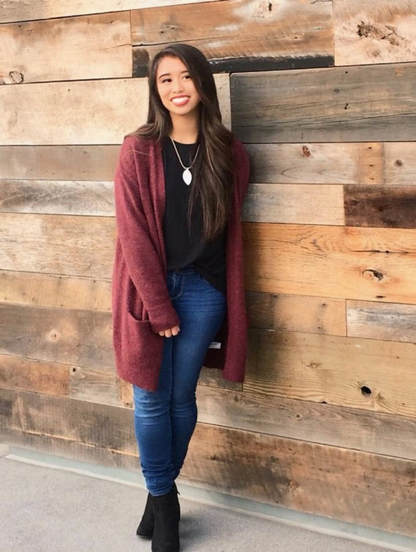 Gillian Rule: What is your cultural background? Sammie Serrano: Ethnically, I am Filipino. Both my parents are Filipino. My mom moved from the capital of the Philippines to the states in Cerritos when she was ten years old. She still speaks Tagalog (Filipino language), but she has no accent. My dad grew up in southern California in San Diego, but his parents are from a province in the Philippines called “Batangas.” He used to be able to speak Tagalog when he was really little, but he can only understand it now. However they both grew up in cities where there is a very high concentration of Filipinos, hence they were surrounded by the culture a lot more than I was. GR: What does cultural expression mean to you? SS: To me, it means to feel proud to hail from whatever nationality you were blessed to be, in spite of historical or stereotypical fallacies. It doesn’t necessarily mean wearing traditional clothing all the time as a fashion statement, at least to me (because at least we know that they’re only worn during special occasions like birthdays or weddings). I would personally know what that’s like because the Philippines is currently ruled by a drug cartel overlord trying to deal with an ISIS-inspired terrorist group in the southernmost mainland region. I know that not everyone necessarily knows this since not everyone keeps up with international politics, but it’s still hard knowing that this is the main issue that most political news outlets in the US tend to display. Nonetheless, Filipinos are proud as a culture. We know that whatever anyone thinks of us, only we know how fun it really is to be part of such a communal culture. We wear the Filipino name proudly, even if people are only half Filipino. GR: Have you ever felt out of touch with the culture that you grew up in or identify with? SS: Yeah, mostly because I grew up in Huntington Beach where there’s not really a lot of Filipinos. There was once a small Filipino restaurant in HB, but it didn’t last very long because there’s just not enough Filipinos that live in HB. If you wanted good Filipino food, you would just go anywhere in Cerritos or San Diego, but that’s a bit of a drive. The only times I really felt in touch with my culture was when I was surrounded by other Filipinos at family parties or even shopping at seafood city, the commissary, manila sunset, or other Filipino supermarkets and restaurants where I can recognize the language. Even though I have some friends who happen to be Filipino, it’s funny how the main reason we get along is that we simply are Filipino. Although my mom speaks Tagalog, I never was able to learn the language. I do know some miscellaneous words, but I still wish I was able to speak it fluently. GR: What aspects of your culture do you particularly admire or appreciate? SS: Where do I even start... The most prominent way that we show our love to others is through food. We tend to make a surplus of food for guests because we’re paranoid about having enough for everyone, even if just one person is coming over. I feel most in touch with my culture when I go to any family gathering, because no matter the occasion, whether someone turned a year and a half years old or someone just got engaged or even if someone just died, there’s always going to be a surplus of food waiting for you in the kitchen. At these parties, because we over make so much food, there is literally a word in Tagalog that refers to the leftovers that you’re supposed to take home from the party. We just like taking care of people by making sure they’re well fed. We’re very welcoming and warm to our peers and guests, and that’s why I’ve grown up with such a big and supportive family. Even when I went to the Philippines for the first time in 2017, my favorite part of the mainland was the hometown of grandpa on my mom’s side. Although it was a humble town with lots of rice farms and a small town square, everyone would say “hello” or “good morning” as we were walking by, even if it meant they had to look up and stop whatever they were doing in the rice farms. What I find most hilarious is that Filipinos are always the first ones to make fun of our accents. Out of all the types of puns in the world, Filipino puns are by far my favorite. They can only be understood if you say them out loud because the accent plays into the joke. I just love how we as a culture know how to laugh at ourselves and be the first to make fun of our own accents. "The Power of Kindness" by Eden Hawes (above). Bullying: something we have all experienced in some shape or form. Unfortunately, it happens, although, I will give our world some credit because I feel like times have changed. We have definitely pulled our weight with trying to prevent bullying. Nowadays, there are many forms of wellness programs, non-profit organizations to raise awareness, and supporting hands to reach out to others. Nonetheless, it must be recognized that bullying is something that affects people in different ways. Maybe a kid picked on you at the playground when you were young, or you received a nasty comment on your post, or someone was saying rude things about you behind your back. For some victims of bullying, they can wipe it off of their shoulders easily, but for others, they carry it heavily on them for a long time. We all know what bullying is. I am not here to explain the different types of bullying. What I am here for is to spread an important message that resonates with me deeply: kindness. Kindness is something that is extremely important in today’s society. With all of the hate in the world, there needs kindness. In many cases, the bullies are the people who need kindness the most in their lives. If someone makes you feel insecure about yourself, it’s most likely because they are insecure about themselves. So be the best you can be! Believe in yourself and have confidence that no one can crush! “Killing them with kindness” is something I try to practice daily. It can be hard, I know. When someone says something nasty to you or your friends, it’s easy to say something nasty back. But what do we get from that? If someone says something nasty to you, and you make 'comeback' with a kind remark, you receive internal satisfaction. If you have enough confidence and willpower to let it slide, and saying something nice back it will: (1) Make you feel proud and good inside, (2) Make the bully realize that they are the one being rude, and (3) Probably make the bully’s day a little bit better because everybody needs to hear nice words in their life. If you can practice this daily, I bet you will start seeing life in more positive ways. Why have a negative outlook on life when you’ve only got one shot here on Earth? Why spend your time on this planet making enemies when you can create wonderful relationships and spread love? I achieved my Girl Scout Gold Award this May. I made a PSA about the importance of kindness. I believe that with kindness, we can make progress to putting an end to all of the hate and crime in the world. My PSA is linked above this article and it would mean the world to me if you viewed it and shared it with everyone you know! Being kind is something all ages and different walks of life should practice, and we connect with each other when doing so. So, the next time someone gives you a hard time, try to be kind back. It will make them stop and realize that you are being so kind. Plus, you will make their days better than when you first saw them. You never know what the smallest act of kindness can do for someone. So why not do it? Eden HawesHeart2Art Project Contributor |
